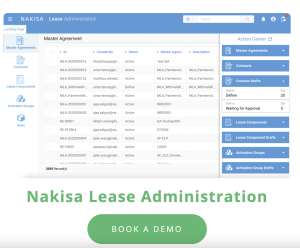The execution of an acquisition integration is pivotal to driving towards meeting acquisition synergy targets with your talent strategy. There are a handful of key practices that may just help realize a further reduction of costs by accelerating the benefits of rapid integration.
1. Identify integration complexities as early as possible in the deal process to avoid surprises
Every organization has its own set of norms, values and assumptions that govern how people act and interact every day. Business leaders need to be able to identify and develop mitigation plans and know the tolerance for integrating two or more organizational cultures that are measurably different from one another. One of the biggest challenges of most integrations is the development of a strategy for culture. Usually, the acquiring company wants to maintain its own values. Occasionally, it makes the acquisition in hopes of infusing the target company's culture into its own. In reality, regardless of the situation, it’s important to commit to the culture you want to see emerge from the integration. C-suite executives, as leaders of the business, need to proactively manage the culture in order to stay ahead of changes, and avoid unwanted surprises; as cultural conflicts can produce significant complexities to creating a high performing organization.
2. Quantify the opportunities and synergies of the integration in detail, ensuring the synergies are achievable quickly
The new organization should be designed around the cost and the vision for the combined company. Best practice is to assign leaders to categories of cost synergies. Further, leaders need to build teams around the synergy bundles, and choose talent that is enthusiastic about realizing the synergies and can contribute the most to it. Set yourself an ambitious deadline for assigning leaders to deliver on the synergies.
3. Integration should focus on the value priorities that were established at the outset of the acquisition
During an M&A integration, business leaders need to focus on the objective of the acquisition and ask the questions: What did we set out to achieve with this acquisition? What does that look like? How do we create short-term shareholder value? How do we leverage the combined teams for increased sales and market reach? These, and similar questions, need to be asked in the pre-integration environment in and effort to stay on track and steer integration efforts accordingly.
4. Address retention issues quickly and reinforce vision continuously
Regardless of the type of transformation the integration causes, the extent to which employees can identify with their organization, see a clear future, participate in challenging work efforts, or strive toward organizational objectives, needs to be top of mind during the integration. Often, organizations lose this focus, causing talent to drift, remain uncertain, and become disengaged; ultimately, increasing attrition rates for key talent. To hedge against this risk, once your organization implements action plans, it’s critical to ensure that they don’t lose steam. It’s crucial for organizations to understand that recognizing the positive impact of engagement is the ingredient for a recipe that accelerates integration and helps realize operational synergies faster. The approach for driving engagement will look different depending on the organization and/or situation. However, taking the first step in a change strategy (measuring engagement and what drives it for your organization) is an important element in enabling your organization to quickly address the retention issues associated with most types of transformation. At the core of this strategy is understanding your talent. Who’s the right talent to hold whatspecific mandate in the integration? How will we communicate with them regularly? How will we involve them in decision making? How will we assist them in engaging others? Ideally, this process will become part of your ongoing culture.
5. Align an integration coach for senior executives to help focus on the transition of the purchased company into the purchasing company.
The process of integrating a newly acquired company can be particularly daunting for leaders (both of the acquiring company and acquirer) as they attempt to perform their mandate of integration while being impacted by unknown processes, behaviors, and potential competing cultures. One way to cut through the ambiguity and the confusion is to appoint a coach to support the acquired company in their process of integrating into the acquirer’s company. This integration coach serves as a calming and knowledgeable leader that facilitates the alignment of the two executive teams and their integration efforts. Remember, the acquired company is being integrated into an organization they know nothing about: new processes, new culture, new ways of getting their work done. A helpful hand to navigate uncharted waters may just help avoid frustrations. It is about leveraging the right talent, clearing roadblocks, and connecting resources that have the goal of success in mind.
6. Ensure the road to the end state organization is mapped out in advance
As we know, speed is a critical factor in integration success. Wherever possible, clarity of the end state organizational model and operating plan is vital for keeping a business on track during the integration process. Identifying risks, operationally or talent related, and defining mitigation plans to address them early on is paramount to a smoother integration. Further, the end state needs to be communicated to the organization. Continuously align the team to the vision.
7. Secure the right tools to do the job in advance
Transformations can be complex and manually intensive. Technology can be leveraged to accelerate the process surrounding M&A integrations and increase your return on the investment you have made. Seek out automation and software solutions in the marketplace that can assist you to design your future state organization, identify the talent required to be successful, integrate targets and KPIs that you will leverage for success, and can keep you on the rails in the integration process. The manual efforts associated with integrations can bog processes down and can result in huge cost overruns. Acquiring a software solution that can support all your needs in this area can save enormous amounts of time, allow you to make better decisions, and accelerate implementation. The HANELLY™ M&A&D software solution by NAKISA® is one such option.







